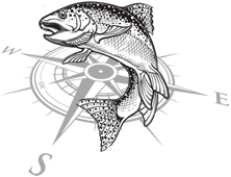Using a Stomach Pump

![]()
One Autumn while I was nymph fishing the North Fork Payette River in Southwestern Idaho I was having a no brainer type of day on the river. Nymphing had been enjoyable and I was catching large rainbow trout out of a few of the tailouts where I have caught them in the past few decades and it was relatively easy. By no brainer type of day I mean the fishing was so simple it did not matter what nymph I used, the trout were hungry and I was happy to deceive them. All the trout I was catching was on a size 16 or 14 bead head nymph bouncing near or on the bottom alongside a nice sized tailout. However I was soon to be left staring into a clear plastic cup trying to figure out what I was looking at and how was that going to change how I was currently fly fishing.
For no particular reason other than just to cure my curiosity, one of the last trout I caught I decided to pump the contents of it’s stomach to see what these guys were eating. Lately I’ve been carrying a stomach pump on my lanyard for the occasion when I need it. As I pulled the nymphs out of trout’s lips I calmed him down by whispering him under water to the point where he had calmed down. To pump this trout’s stomach I turned the trout upside down and performed the deed. With a stomach pump full of black stuff, I released the unharmed trout back into the river, and released the contents of his stomach into a clear plastic dish with a screw cap I use for such occasions. What I saw in the dish were hundreds of tiny size 20 olive bodied Midges.
I had been catching all my fish on rather large nymphs on the bottom but the trout I pumped had been eating 100 percent Midges. My guess is that all the trout I had been catching, more that likely, had also been feasting on Midges. Then why were they eating a mish mash of different nymphs? There in lies the fly fishing problem that caused me to stop fly fishing and delve into a possible solution. I had not seen a trout rise for the past three hours I had been fishing but these trout were eating my nymphs while their stomachs said they were eating something else. Hmm. Everything in fly fishing is logical so therefore every fly fishing problem has a logical solution. Now things started to become complicated. Why are these trout eating my nymphs when they have hundreds of Midges in their stomachs?
Having a stomach pump on board your person is a great tool for finding out just what trout are eating, but more importantly what size is the bug they are eating. It will help you in you fly selection and in the size of fly you choose. During that pesky Midge hatch on the Owyhee River, when you manage to land some trout, finding the right size Midge those trout are feeding on will make the difference between a one trout day and a twelve trout day. If you purchase a pump make sure you read the directions well.
Done wrong you can harm the trout. It’s relatively simple, with pump in hand completely fill the pump with water. Then push out half the water and insert into the esophagus of the trout, not into his stomach. With the pump in the trout’s esophagus, push the remaining water into the trout and release the bubble. This releasing of the bubble will suck the remaining water in the trout’s belly out into the pump. Then pump the contents into a dish or your hand and there you have it.
What I realized that day on the North Fork Payette River from the contents of the trout I pumped was not so much to change my flies to match but to be on the river either early the next morning or stay late into the afternoon/sunset because these trout will be actively feeding on the surface. Without pumping the contents of the trout I caught I would never have know there was going to be this hatch and or what size and type of Midge to present to them.

